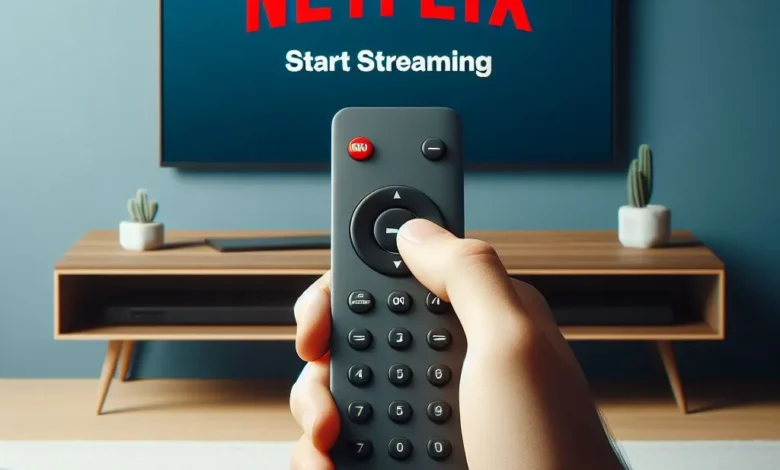When Did Netflix Start Streaming?
A Look at How the Pioneering Service Disrupted Entertainment

When Did Netflix Start Streaming? A Look at How the Pioneering Service Disrupted Entertainment
Netflix started out in 1997 as a DVD rental by mail service. Fast forward a decade later, and the company would launch an online streaming service that would forever change how people watch television and movies.
Streaming has become synonymous with Netflix today. But do you know exactly when Netflix started streaming? How did this innovative platform alter the entertainment landscape?
This article will dive into the origins of Netflix streaming and its rise to dominance. We’ll cover:
- A brief history of Netflix’s early days
- The launch of online streaming in 2007
- Major milestones for Netflix streaming
- How Streaming Transformed Entertainment Consumption
- The growing competition in the streaming industry
And more. Let’s get started.
A Look Back at Netflix’s Beginnings

Before exploring when Netflix started streaming, it helped to understand its modest beginnings.
Netflix was founded in 1997 in Scotts Valley, California by Reed Hastings and Marc Randolph. The original idea was to offer online movie rentals with a subscription model.
In 1998, Netflix launched its website with a library of 900 DVD rental titles. The company pioneered the concept of a monthly subscription fee rather than pay-per-rental. This allowed unlimited rentals without due dates, late fees, or other restrictions.
The Netflix DVD rental business took off quickly. By 2000, their catalog expanded to over 3,100 titles. And subscriber numbers crossed 1 million by 2001.
Netflix successfully IPO’d in 2002, further fueling its growth. The company began optimizing operations, opening distribution centers to hasten shipping.
But an even bigger disruption was on the horizon.
The Launch of Netflix Streaming in 2007
For the first decade, Netflix made its mark in the movie rental industry through DVDs by mail. However, growing internet speeds and advancing technology set the stage for an innovative new offering – online streaming.
When Did Netflix Start Streaming?
Netflix began streaming in 2007, a full 10 years after its founding.
In January 2007, Netflix introduced its online streaming service with around 1,000 TV show and movie titles. The launch was limited to personal computers at first.
Netflix streaming was included for free with existing DVD rental plans, which started at $5.99 per month at the time. This gave subscribers access to both physical and digital rentals.
The modest streaming catalog mainly comprised older library titles and movies. But it marked a watershed moment for internet television.
For the first time, viewers could instantly watch shows and films on-demand on their PCs without needing to wait for DVDs to arrive by mail.
Early Streaming Milestones for Netflix
After its initial launch, Netflix streaming was quick to expand to more devices and gain traction. Here are some key milestones from the early days:
- 2008 – Streaming arrives on Blu-ray players, TV set-top boxes, and game consoles.
- 2010 – The first international expansion extends streaming to Canada.
- 2011 – Netflix launches in Latin America and the Caribbean.
- 2012 – Netflix streaming content grows to over 30 million hours of programming.
- 2013 – Netflix premieres its first original show House of Cards, followed by Orange is the New Black. This marked its foray into exclusive original content.
Within 5 years, Netflix streaming had grown from a limited offering to an extensive on-demand video platform available across the world.
Next, we’ll see how streaming revolutionized entertainment and home viewing.
How Netflix Streaming Disrupted Traditional Television
Netflix streaming introduced several groundbreaking innovations that changed how people watch TV and movies. Here are some of the major ways Netflix reinvented entertainment consumption:
Binge-Watching
In 2013, Netflix began releasing entire seasons of shows simultaneously. This popularized the phenomenon of binge-watching. For the first time, viewers could watch episodes back-to-back at their own pace rather than waiting weekly.
Personalization
Powerful algorithms analyze user data to refine Netflix’s personalized recommendations. The recommendation engine serves up new titles and helps people discover content suited to their tastes.
Original Programming
Netflix spends billions creating acclaimed original shows and films like Stranger Things, The Crown, and Roma. Originals entice and retain subscribers.
Device Agnostic
Whether it’s a smartphone, tablet, computer, or smart TV – Netflix offers seamless viewing across virtually any device. This ubiquity has expanded its reach tremendously.
No Ads
Unlike network television, Netflix streams content without any disruptive ads or commercial breaks. Uninterrupted viewing makes for an enhanced experience.
Offline Viewing
The option to download select titles for offline viewing adds tremendous flexibility. Users can watch shows and movies on planes, at parks, or wherever internet is unavailable.
By embracing these innovations early on, Netflix was able to capture the streaming market and achieve massive growth in subscriptions. Let’s take a look at those numbers.
Netflix Streaming by the Numbers
Since expanding into streaming in 2007, Netflix has amassed staggering statistics across metrics like subscribers, revenue, content hours, and more.
- Over 230 million global paid members as of Q4 2022
- $7.7 billion in profit in 2020, compared to $4.4 billion in 2019
- Users streamed over 140 million hours per day in 2020
- Library includes over 3,500 original titles and thousands more licensed TV shows and movies
- Accounts for 15% of global internet bandwidth as of 2021
- Launched in over 190 countries around the world
These mind-boggling numbers highlight the runaway success Netflix has achieved based on streaming. But with meteoric growth often comes fierce competition.
The Crowded Streaming Market Today
For years, Netflix enjoyed a first-mover advantage in the digital streaming space. However, the tremendous commercial potential has given rise to many big rivals vying for market share.
Major Players
Some of the top services competing with Netflix today include:
- Hulu – Owned by Disney, Hulu has over 45 million subscribers to its multi-tiered streaming offerings.
- Amazon Prime Video – Available to all Prime members, Amazon’s service boasts a robust content portfolio and about 200 million subscribers.
- Disney+ – This platform focuses on Disney’s deep catalog of animated and live-action movies and shows, garnering around 130 million members so far.
- HBO Max – A streaming extension of the popular HBO cable network with over 76 million subscribers.
- Apple TV+ – The tech giant’s streaming play focusing on prestige original programming and series.
Shifting Strategies
Facing heat from competitors, Netflix has adapted its strategy to offer more pricing tiers, crack down on password sharing, release episodes weekly for some originals, and plan ad-supported subscriptions.
To retain its top position, Netflix is investing heavily in local-language originals across global markets. The streaming pioneer also continues to harness data analytics to improve personalization and content acquisition.
Only time will tell how competition reshapes the streaming landscape in the long run. But Netflix retains key advantages due to its head start, rapid scaling, and laser focus on streaming from the beginning.
FAQs About Netflix Streaming
When did Netflix start streaming in the US?
Netflix first introduced online streaming in January 2007 for subscribers in the United States. The launch library comprised 1,000 older movie and TV titles.
What could you watch on Netflix when it first started streaming?
The initial streaming catalog mainly included older licensed movies and TV shows. Early content came from studios like MGM, Sony, and Disney. Netflix didn’t start producing originals until 2013.
How much did Netflix streaming cost when it launched?
There was no additional fee for streaming at launch. It was included for free with existing DVD rental plans, which started at $5.99 per month in 2007.
Does Netflix still mail DVDs?
Yes, Netflix’s DVD rental by mail service still exists as a separate add-on subscription. As of 2023, plans start at $9.99 per month for up to 2 DVDs out at once.
How many streaming subscribers does Netflix have?
As of Q4 2022, Netflix reported over 230 million streaming subscribers globally across 190 countries.
Netflix Streaming: The Game-Changer for Entertainment
It’s incredible to think how far Netflix has come since those early DVD mailing days.
The 2007 debut of online streaming ushered in a new era of entertainment. On-demand access revolutionized how viewers consume content across devices.
Netflix capitalized on streaming early to amass a subscriber base of well over 200 million worldwide. Along the way, it normalized bingeing, popularized original series, and became a global household name.
Despite mounting competition, Netflix retains pole position in the streaming industry it pioneered 15 years ago. The company remains laser focused on delivering the ultimate on-demand viewing experience to keep subscribers hooked.




